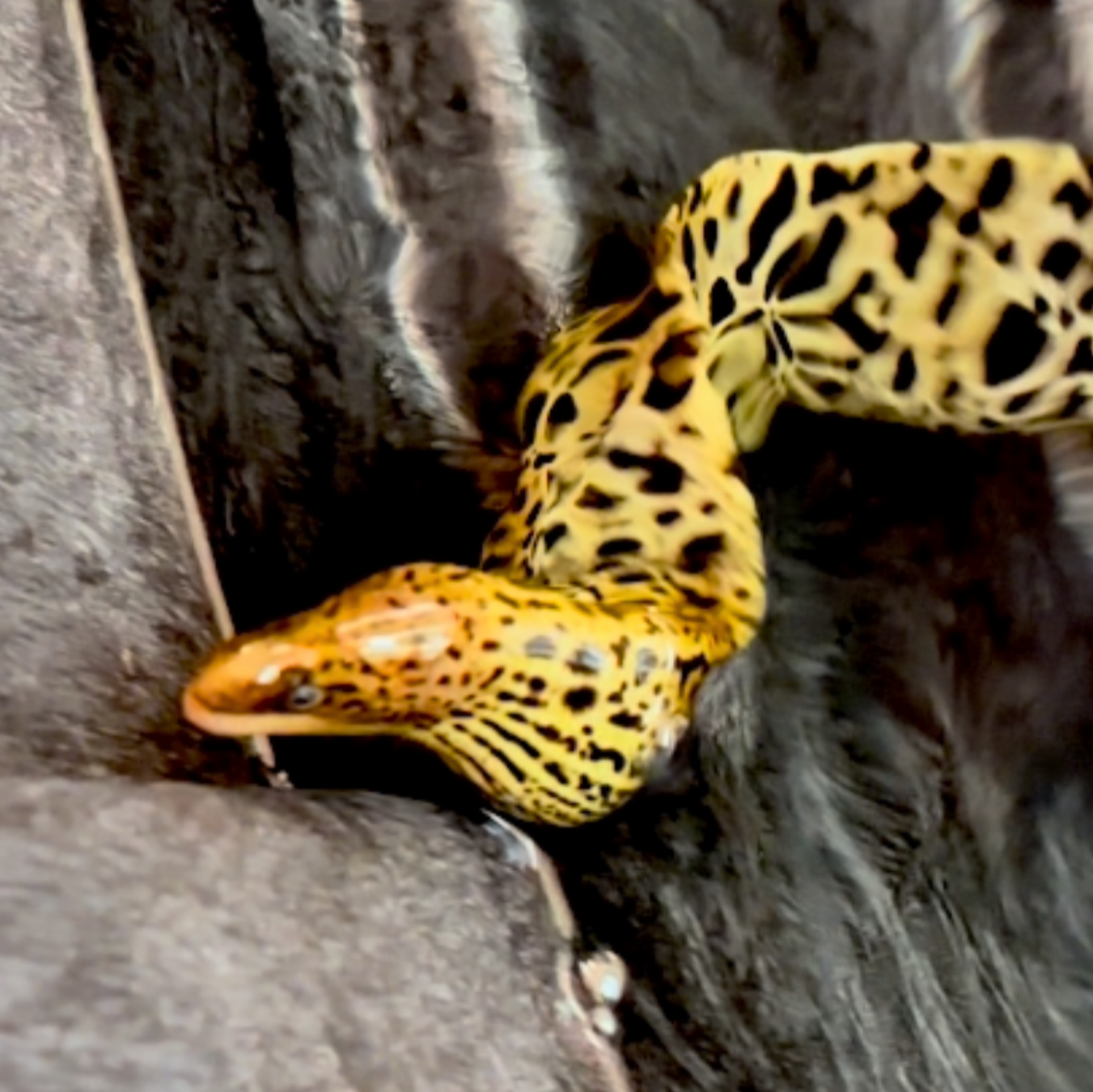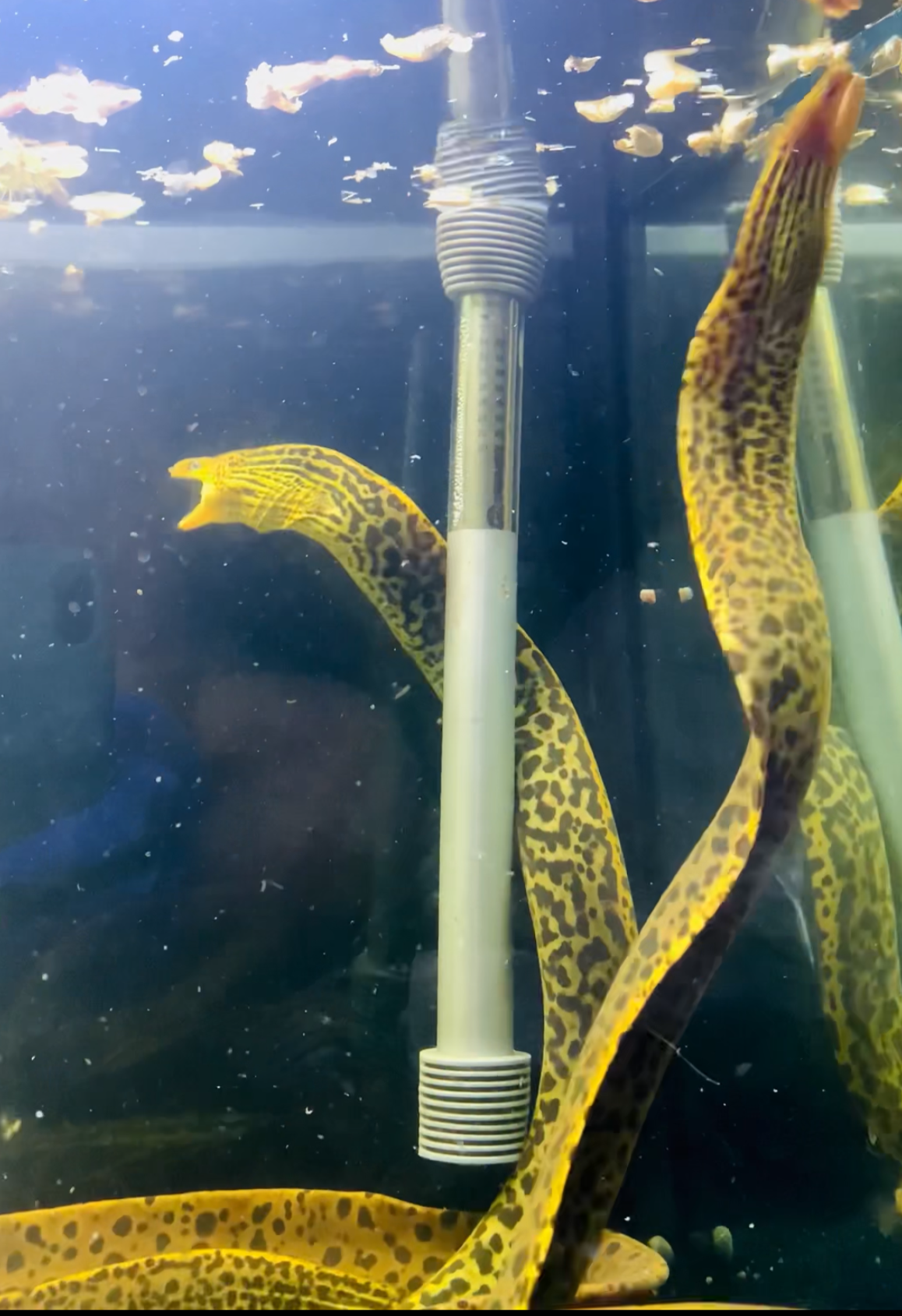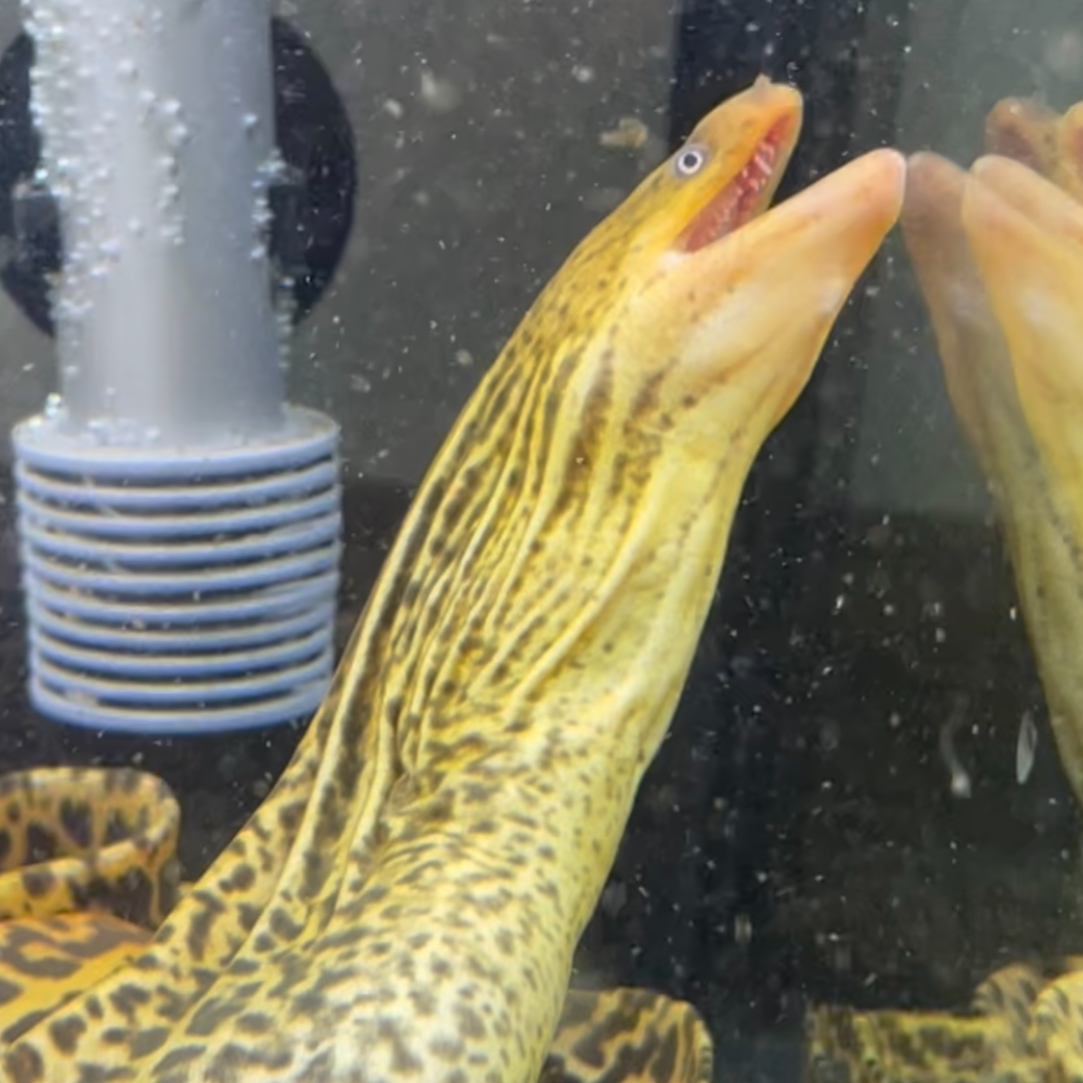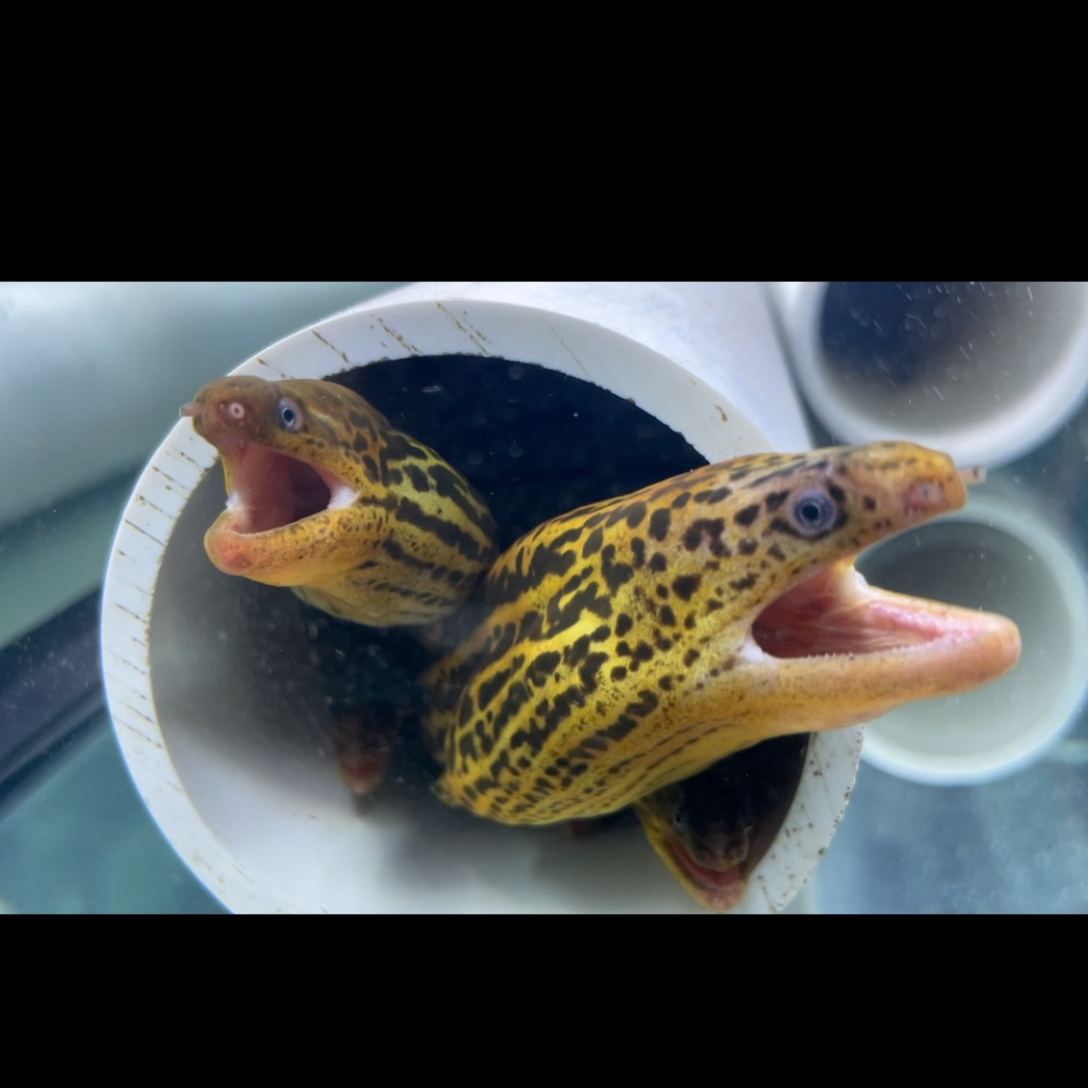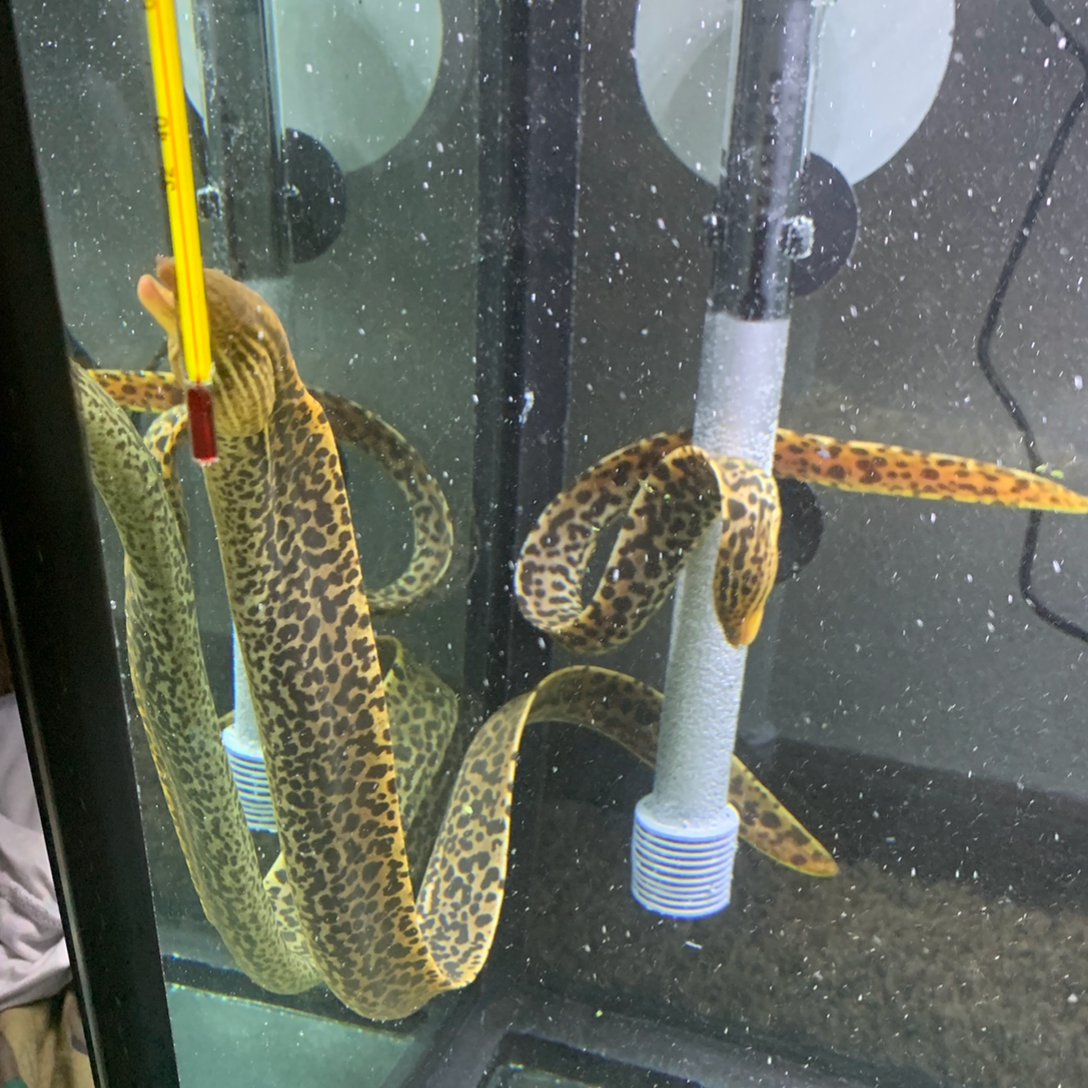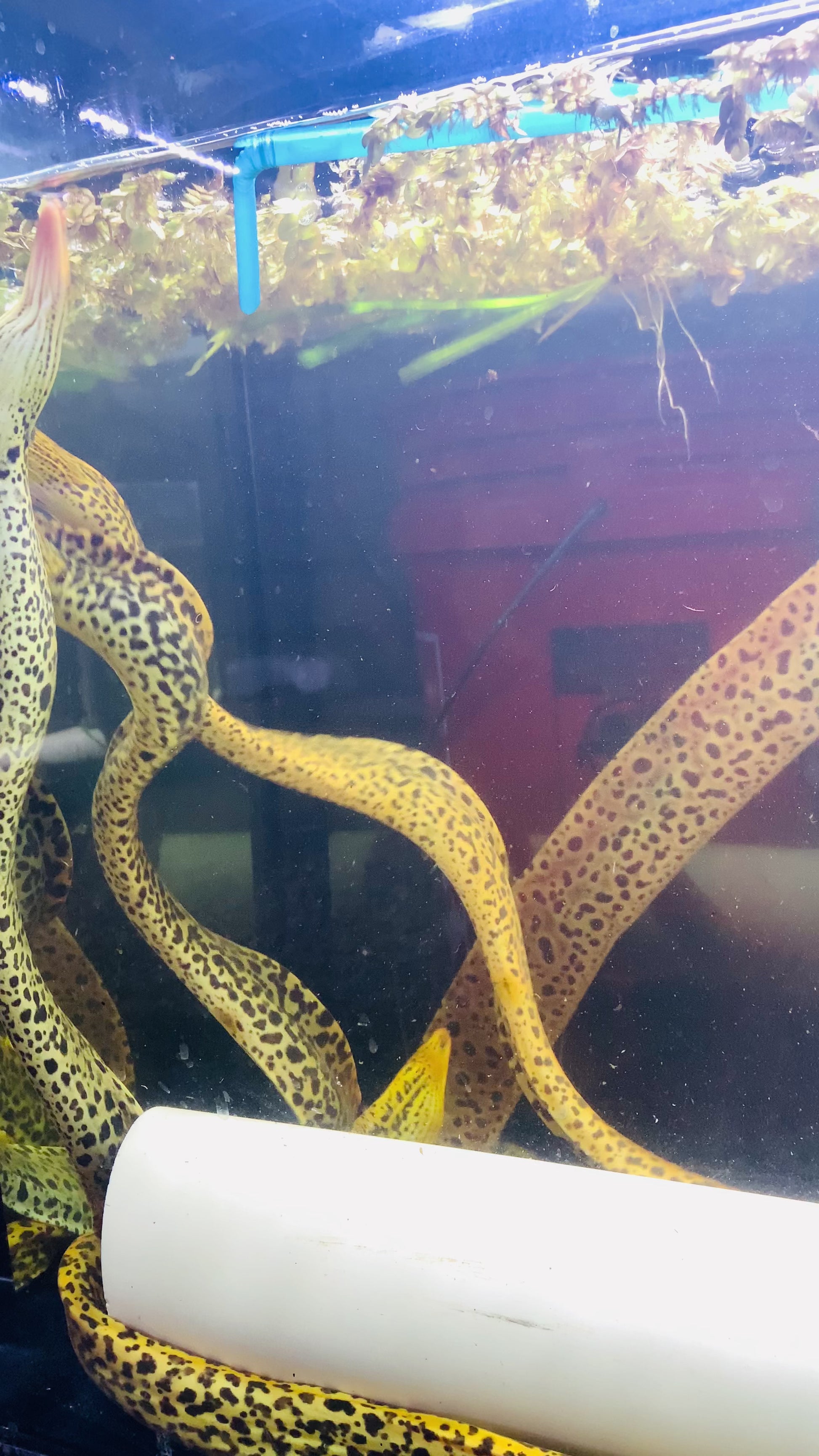Large Freshwater Tiger Moray Eels 20-24”+
Large Freshwater Tiger Moray Eels 20-24”+
Regular price
$299.99
Regular price
$319.99
Sale price
$299.99
Unit price
per
Shipping calculated at checkout.
Couldn't load pickup availability
View all sizes and options HERE
See Photo Reviews From Customers HERE

Are you considering adding a Freshwater Tiger Moray Eel (Gymnothorax polyuranodon) to your aquarium? These fascinating creatures can make a unique addition to your tank. In this FAQ, we'll answer some common questions about caring for freshwater tiger moray eels.
What is a Freshwater Tiger Moray Eel?
The Freshwater Tiger Moray Eel, also known as Gymnothorax polyuranodon, is a species of eel that is native to the freshwater rivers and streams of Southeast Asia. They are known for their striking appearance, with a pattern of dark stripes on a light background, resembling the spots of a leopard. My eels are all wild caught without hooks in Indonesia. Traditionally they are caught with hooks and may sustain damage which could lead to death by food strike or infection.
ARE THEY REALLY FRESHWATER?
While Gymnothorax Polyuranodon can tolerate brackish water, it tends to prefer freshwater environments. This preference is primarily driven by the availability of food sources. Freshwater habitats offer a rich variety of prey, including small fish, crustaceans, and mollusks, which serve as the eel's main source of nutrition in the wild. Luckily for us aquarists, this eel is not too picky and will have no trouble eating a wide variety of common aquarium food covered later in this guide.
Gymnothorax Polyuranodon possesses certain physiological adaptations that enable it to survive in both freshwater and brackish water environments. One such adaptation is its ability to regulate its internal salt concentration. This eel species has specialized cells in its gills that actively transport salt ions, allowing it to maintain the necessary balance in different water conditions.
While it is primarily found in freshwater environments such as rivers, lakes, and swamps, it is also known to venture into brackish water habitats, which are a mix of freshwater and saltwater. This adaptability allows the eel to explore a wider range of ecosystems.
What size tank do Freshwater Tiger Moray Eels need? How many can I keep per tank?
Freshwater tiger moray eels can grow quite large, reaching lengths of up to 3 feet. Therefore, they require a spacious tank to accommodate their size. Tank size widely varies.
First, lets establish the different sizes they come in as.
SMALL VARIETY |
The smallest they come, 5-11". Dull colors that later turn into gorgeous bright colors. |
MEDIUM VARIETY |
12-17". These are much fatter, and taller, than their smaller counterparts. |
LARGE |
18-23". These fish are semi-aggressive and love to eat feeder fish like guppies. |
EXTRA LARGE |
29"+ These are the kings of the tank. They will soar across the side of the glass. It's truly a crazy image. Still remains semi-aggressive and can be housed with a multitude of tankmates. |
Tank Size |
Moray Eels That Can Be Kept |
20-29 Gallons |
2 Small Tiger Moray Eels Temporarily |
40 Gallons |
3 Small Tiger Moray Eels OR3 Medium Tiger Moray Eels |
55 Gallons |
7-8 Small Tiger Moray Eels OR5-6 Medium Tiger Moray Eels |
75 Gallons |
10+ Small Tiger Moray Eels OR7-8 Medium Tiger Moray Eels OR1 Large Tiger Moray Eels |
125 Gallons |
2-3 Large Tiger Morays OR1-2 XL Tiger Morays |
What do Freshwater Tiger Moray Eels eat?
My Eels eat:
- Frozen Krill
- Earthworms
- Blood Worms
- Ocean Plankton
- Pellets
- Feeder Fish
Consider the fact that ExoticFishGuy.com does not use hooks to catch our tiger moray eels. Through the years we found that the practice of using hooks can damage morays permanently. As far as we are aware, other sellers are buying from wholesalers who obtain them from fisherman using the hook method.
Eels can be picky eaters at first while they adjust to their new home. All eels are made sure to be eating before being shipped out to their new homes. You can try anything from the list, but I recommend offering frozen krill and earthworms to start.
These eels are carnivorous and primarily feed on small fish, crustaceans, and other invertebrates. In captivity, they can be fed a diet of frozen or live foods such as shrimp, fish, and squid. They will also accept pellets. To hook them on pellets, hold feedings for a week and try. Repeat. They love fish store guppies and other feeder fish. They are not picky, here is an image of one I had that was trying to eat an algae wafer.
Can Freshwater Tiger Moray Eels be kept with other fish?
Freshwater Tiger Moray can be kept with many different types of fish. They are known to be semi-aggressive towards smaller fish and may see them as potential prey, think guppys and comet goldfish. Bichirs, other eels, such is other tiger morays or fire eels, stingrays, catfish, cichlids are a few examples of suitable tank mates.
Can I keep a Large Tiger Moray with a Small Tiger Moray?
Tiger Moray Eels are relatively peaceful fish. I have witnessed 3 foot specimens ignore 9-12" specimens completely while existing in the same ecosystems. I would not recommend this large of a size difference but a large and medium eel or large with extra large wouldn't be out of the question at all.
Morays play well with each other generally and many can be kept in the same tank as long as size allows.
What should the water parameters be?
The water temperature should be kept between 75-82°F (24-28°C), with a pH level of 6.5-7.5. These fish do great in a range of temp and pH as they are built to tolerate shifts when they move to saltwater to breed and return back to freshwater habitats.
Are Freshwater Tiger Moray Eels suitable for beginners?
Yes absolutely. They are extremely hardy fish and with proper care and nutrition they will thrive. The biggest mistake one can make with this species is to leave room for escape. As mentioned earlier in this guide, the top of the tank needs to be completely sealed off. These fish are hardy and will tolerate a wide range of water quality and will even hold up better against ammonia and high nitrites/nitrates than most other fish in my experience.
